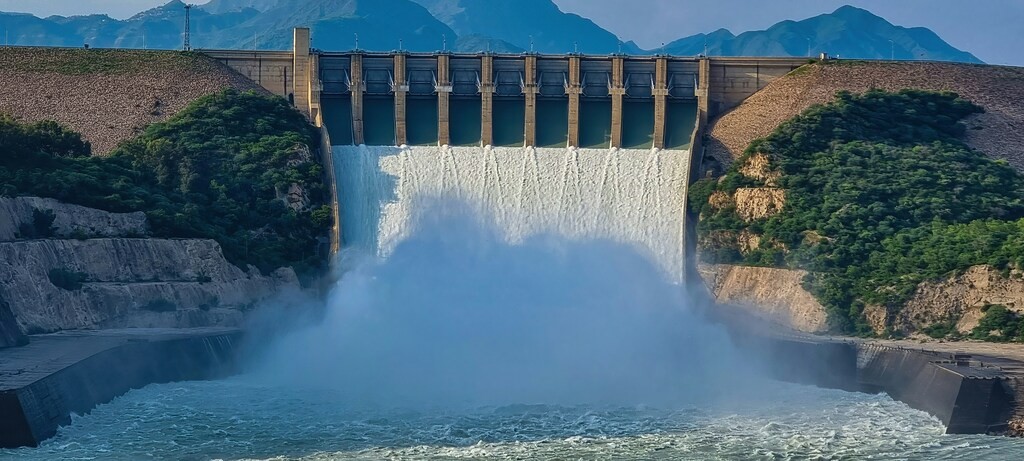In recent years, there has been a significant advancement in the field of Artificial Intelligence (AI) and Augmented Reality (AR). These technologies have become increasingly popular and have the potential to enhance virtual experiences in various fields such as gaming, education, healthcare, and...
AI Boosts Efficiency and Sustainability of Energy Infrastructure - Empowering Smart Grids and Renewables

In recent years, there has been a growing interest in utilizing artificial intelligence (AI) to optimize energy infrastructure, particularly in the context of smart grids and renewable energy sources. With the increasing demand for sustainable and efficient energy solutions, AI has emerged as a powerful tool to enhance the performance and reliability of energy systems.
One of the key challenges in energy infrastructure is the integration of renewable energy sources, such as solar and wind, into the existing grid. AI technologies can play a crucial role in addressing this challenge by predicting and optimizing the output of these intermittent energy sources. By analyzing historical data and weather patterns, AI algorithms can accurately forecast the availability of renewable energy and adjust the grid operations accordingly.
Moreover, AI can also help in improving the efficiency of energy distribution and consumption. By analyzing real-time data from smart meters and sensors, AI algorithms can identify patterns and anomalies in energy usage, enabling utilities to optimize the distribution network and minimize energy losses. Additionally, AI can provide valuable insights to consumers, empowering them to make informed decisions about their energy usage and reduce their carbon footprint.
Furthermore, AI can enhance the overall resilience and reliability of energy infrastructure. By continuously monitoring and analyzing data from various sources, including sensors, weather forecasts, and maintenance records, AI algorithms can detect potential failures or disruptions in the grid and take proactive measures to prevent them. This predictive maintenance approach can significantly reduce downtime and improve the overall performance of the energy system.
In conclusion, AI has the potential to revolutionize the energy sector by optimizing energy infrastructure, particularly in the context of smart grids and renewable energy sources. By leveraging AI technologies, we can achieve a more sustainable and efficient energy system, ensuring a greener future for generations to come.
AI Optimizes Energy Infrastructure
Artificial Intelligence (AI) is revolutionizing the way we optimize energy infrastructure. With the growing demand for sustainable and efficient energy solutions, AI offers a powerful tool to optimize energy grids and leverage renewable energy sources.
AI algorithms can analyze vast amounts of data collected from smart grids and renewable energy sources, enabling real-time monitoring and control of energy systems. By continuously gathering and analyzing data, AI can identify patterns, predict energy demand, and optimize energy distribution to ensure efficient utilization of resources.
One of the key benefits of AI in optimizing energy infrastructure is its ability to enhance grid reliability and stability. AI algorithms can detect and prevent potential disruptions or failures in the grid by analyzing data from various sensors and devices. This proactive approach allows for prompt actions to be taken, reducing downtime and minimizing the impact of outages on consumers.
Furthermore, AI can play a crucial role in integrating renewable energy sources into the grid. Renewable energy, such as solar and wind, is inherently intermittent and decentralized. AI can help predict energy generation from these sources and optimize their integration into the grid. By dynamically adjusting the distribution of energy based on supply and demand, AI algorithms can ensure the reliable and efficient utilization of renewable energy resources.
In addition to optimizing energy distribution, AI can also contribute to energy conservation. AI algorithms can analyze energy consumption patterns and identify areas of inefficiency. By suggesting energy-saving measures and optimizing energy usage, AI can help reduce overall energy consumption and lower carbon emissions.
Overall, AI brings significant benefits to the optimization of energy infrastructure. By leveraging AI technologies, we can create smarter and more sustainable energy systems, ensuring reliable and efficient energy supply while reducing environmental impact.

Enhancing Efficiency and Sustainability
AI plays a crucial role in enhancing the efficiency and sustainability of energy infrastructure, especially in the context of smart grids and renewables. By leveraging advanced algorithms and machine learning techniques, AI can optimize the operations of energy networks, leading to significant improvements in overall efficiency.
One of the key ways AI enhances efficiency is through demand-side management. By analyzing patterns and predicting future consumption, AI algorithms can optimize energy distribution and storage, ensuring that energy is allocated where it is needed most. This not only improves the reliability of the grid but also reduces waste and minimizes the need for additional infrastructure.
Furthermore, AI can assist in the integration of renewable energy sources into the grid. Integrating renewables can be challenging due to their intermittent nature, but AI can help predict and manage the fluctuations in energy generation. By analyzing weather patterns, energy demand, and other relevant data, AI algorithms can optimize the utilization of renewables, ensuring that their energy contribution is maximized while minimizing reliance on fossil fuels.
Additionally, AI can improve the maintenance and monitoring of energy infrastructure, leading to increased sustainability. By analyzing sensor data and historical performance, AI algorithms can detect and predict potential failures or inefficiencies in the system. This allows for proactive maintenance and reduces the risk of costly breakdowns. Moreover, AI can optimize the routing and scheduling of maintenance crews, minimizing travel time and reducing the environmental impact of maintenance activities.
In conclusion, AI is a powerful tool for enhancing the efficiency and sustainability of energy infrastructure. Its ability to optimize energy distribution, integrate renewables, and improve maintenance processes contributes to a more reliable and sustainable energy system. As AI technology continues to advance, its role in optimizing energy infrastructure will become even more significant.
Smart Grids: Transforming Energy Distribution
In the era of rapidly advancing technology, smart grids have emerged as a revolutionary solution to transform the way energy is distributed. These advanced systems leverage the power of artificial intelligence (AI) to optimize energy infrastructure, improve efficiency, and integrate renewable energy sources.
Smart grids are intelligent networks that enable two-way communication between energy providers and consumers. They utilize sensors, meters, and other devices to collect real-time data on energy consumption, grid conditions, and environmental factors. This data is then analyzed by AI algorithms to make informed decisions and automate various processes.
One of the key benefits of smart grids is their ability to optimize energy distribution. AI algorithms can analyze the collected data to identify patterns and trends in energy consumption, allowing for more accurate demand forecasting. This enables energy providers to adjust supply in real-time, ensuring a reliable and stable energy supply while minimizing waste.
Furthermore, smart grids facilitate the integration of renewable energy sources into the existing energy infrastructure. By monitoring the availability and performance of renewable sources such as solar panels and wind turbines, AI algorithms can optimize their usage and ensure efficient energy generation. This not only reduces reliance on fossil fuels but also helps to mitigate the environmental impact of energy production.
Smart grids also enhance the resilience and reliability of energy distribution systems. By constantly monitoring grid conditions and quickly detecting faults or disturbances, AI algorithms can automatically reroute power and isolate affected areas, minimizing downtime and improving overall system performance.
In conclusion, smart grids powered by AI are transforming energy distribution by optimizing infrastructure, integrating renewables, and improving reliability. These advanced systems are paving the way for a more sustainable and efficient energy future.
Renewables: Revolutionizing Power Generation
The rapid growth of renewable energy sources such as solar, wind, and hydro power is revolutionizing the way we generate electricity. These clean and sustainable sources of energy are playing a crucial role in reducing our dependence on fossil fuels and mitigating the impacts of climate change.
Renewable energy technologies harness the power of nature to generate electricity in a more environmentally friendly manner. Solar panels convert sunlight into electricity, wind turbines capture the energy from the wind, and hydroelectric power plants use the force of flowing water to generate electricity. These technologies have become increasingly efficient and cost-effective, making renewable energy a viable alternative to traditional forms of power generation.
One of the biggest advantages of renewables is their ability to produce electricity without emitting greenhouse gases or other harmful pollutants. By replacing fossil fuel-based power plants, renewables help to reduce air pollution and combat global warming. Additionally, renewable energy sources are infinite and abundant, unlike finite fossil fuel reserves, ensuring a sustainable energy future for generations to come.
Another key benefit of renewables is their decentralization potential. Unlike conventional power plants that rely on centralized grids, renewable energy systems can be installed on rooftops, in remote areas, or even on small scale. This enables individuals and communities to generate their own electricity, reducing their reliance on the main grid and increasing energy resilience.
The integration of artificial intelligence (AI) technologies into renewable energy systems further enhances their efficiency and effectiveness. AI algorithms can optimize the operation of renewable energy assets, predicting energy production, managing energy storage, and optimizing energy consumption. This enables a more reliable and stable power supply, as well as better management of fluctuating energy generation from renewable sources.
In conclusion, renewables are revolutionizing power generation by providing a clean, sustainable, and decentralized alternative to traditional forms of energy. With the help of AI, these technologies are becoming even more efficient and reliable. By embracing renewables, we can create a greener and more sustainable future for our planet.



